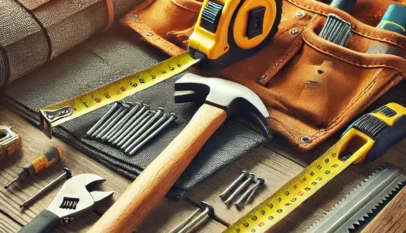Low Maintenance Indoor Plants: Easy Greenery for Busy Lifestyles
For those seeking to add greenery to their living spaces without extensive upkeep, low maintenance indoor plants are an ideal choice. These plants thrive with minimal care, making them perfect for busy lifestyles or for individuals new to gardening. Whether it’s a small apartment or a spacious home, selecting the right plants can enhance any environment.
Many popular options include succulents, pothos, and snake plants, all known for their resilience and ability to flourish in various conditions. They do not require frequent watering and can tolerate less sunlight than other houseplants. This accessibility allows anyone to enjoy the benefits of indoor plants without feeling overwhelmed by the responsibility.
Incorporating low maintenance indoor plants into a home not only adds beauty but also improves air quality. By choosing the right varieties, anyone can create a vibrant, healthy atmosphere with ease. Embracing these plants makes it simple for anyone to experience the joys of indoor gardening.
Selecting Low Maintenance Indoor Plants
When choosing low maintenance indoor plants, it is essential to consider specific factors. Key aspects include assessing light conditions, understanding water needs, and considering the growth habits of the plants.
Assessing Light and Space
Before selecting indoor plants, evaluate the available light in the intended location. Indoor spaces can vary from bright to low light, which significantly affects plant performance.
Types of Light:
- Bright Direct Light: Ideal for succulents and cacti.
- Bright Indirect Light: Suitable for pothos and snake plants.
- Low Light: Perfect for ZZ plants and peace lilies.
Consider the size of the plants relative to the space. Small plants like spider plants can fit on shelves, while larger plants such as rubber trees need more floor space. Ensuring the right light and space will enhance plant growth.
Understanding Water Requirements
Different plants have varying water requirements, which is crucial for maintaining low upkeep. Overwatering is a common mistake, leading to root rot and plant health issues.
Watering Needs:
- Succulents and Cacti: Require infrequent watering; only when the soil is completely dry.
- Pothos and Snake Plants: Tolerate lower moisture levels; water every two weeks.
- Peace Lilies: Prefer consistent moisture; check before watering.
Utilize a moisture meter to gauge soil dampness accurately. This approach prevents unnecessary watering and promotes healthier plants with minimal effort.
Considering Growth Habits
The growth habits of plants dictate their long-term maintenance needs. Some plants grow rapidly and may require regular pruning, while others remain compact and low-maintenance.
Growth Type Considerations:
- Slow Growers: ZZ plants and snake plants, which can thrive in small spaces.
- Trailing Plants:Pothos and string of hearts, which require support structures.
- Self-Contained Plants: Ferns and peace lilies that maintain their shape with minimal intervention.
Selecting plants according to their growth habits can simplify care routines and ensure they fit well into their designated spaces.
Caring for Your Indoor Plants
Caring for indoor plants involves understanding their specific needs, primarily relating to water, nutrients, and pest management. Proper techniques in these areas can lead to healthier plants and a more pleasant indoor environment.
Optimal Watering Techniques
Watering is fundamental to plant health. It’s crucial to know each plant’s specific water requirements. For instance, succulents and cacti thrive in dry conditions, needing water every two to three weeks. In contrast, tropical plants like pothos prefer consistently moist soil.
The method of watering also matters. Using room temperature water helps prevent shocking the plant. A good practice is to water deeply and allow excess to drain out of the pot, ensuring the roots receive adequate moisture while preventing rot.
Signs of overwatering include yellowing leaves and mold growth on the soil surface. Conversely, under-watering results in droopy leaves and dry soil. Checking the top inch of soil can provide a quick gauge of moisture levels.
Fertilization Basics
Fertilizing supports plant growth by providing essential nutrients. Most indoor plants benefit from a diluted, balanced liquid fertilizer every four to six weeks during the growing season (spring and summer).
Plants typically require nitrogen for leaf growth, phosphorus for root development, and potassium for overall health. Choosing a fertilizer labeled for indoor plants simplifies this process. Using organic options like worm castings or compost can also be beneficial.
Over-fertilization can lead to salt buildup, which may damage roots. Signs of this issue include leaf burn or a crusty residue on the soil’s surface. Regularly flushing the soil with water can help mitigate salt accumulation and maintain healthy roots.
Preventing Common Pests and Diseases
Indoor plants can still attract pests such as spider mites, aphids, and mealybugs. Regularly inspecting plants for signs of infestation allows for early intervention. A strong jet of water can dislodge many pests, while insecticidal soap can provide a more aggressive treatment when necessary.
Maintaining proper humidity and airflow also reduces the risk of mold and fungal infections. Ensuring plants are not crowded allows for better circulation, decreasing disease onset.
Lastly, cleaning leaves with a damp cloth helps remove dust and allows plants to photosynthesize more effectively. Keeping plants healthy in a disciplined manner results in fewer pest-related issues.
Vaishno Devi Helicopter Booking: Your Complete Guide for a Hassle-Free Pilgrimage
Visiting Vaishno Devi is a spiritual journey that attracts millions of pilgrims each year.…














